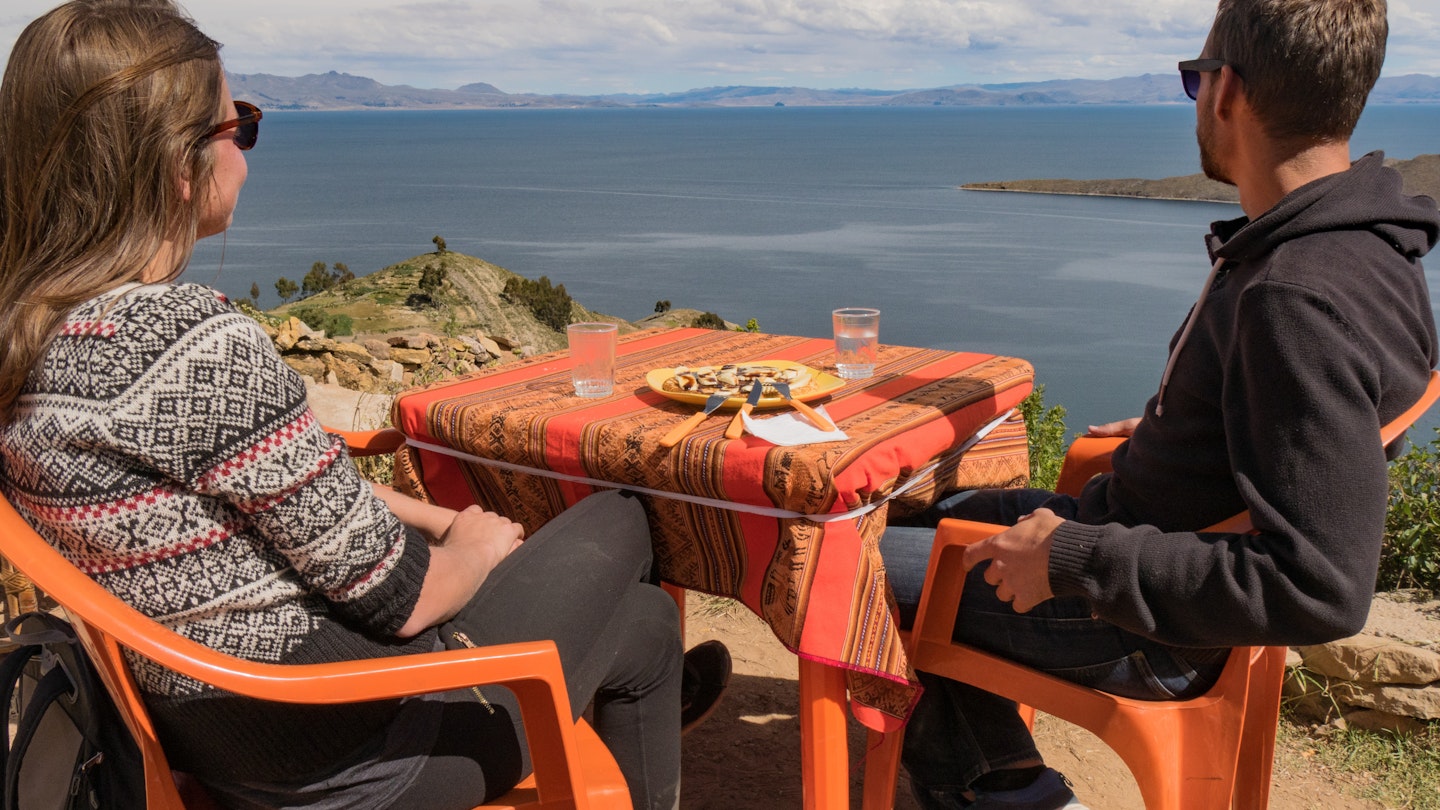Discover the Culinary Delights of Bolivia
Ever had a llama tenderloin? Here’s your chance, maybe with a glass of Tarija wine. Bolivia’s food is as diverse as its population, and you’ll find new delicacies to sample in every town.
Markets are an excellent place to start, although the steaming pots of unfamiliar concoctions might test virgin taste buds. Freshly-blended fruit juices will undoubtedly become a daily habit, while high-altitude Yungas coffee is now available in various new cafes popping up around Bolivia.
The restaurant scene is thriving in Santa Cruz, Cochabamba, and – more than anywhere else – La Paz, where you can sample contemporary takes on traditional drinks and dishes. No matter where you find yourself – be it the tropics or the high Andes – you’re bound to find colorful street snacks and elaborate meals making good use of Bolivia’s vast larder. Here’s a guide to some of Bolivia’s best food experiences.
Snack on Salteñas
These ubiquitous yellow-orange turnovers are a staple mid-morning snack found across Bolivia. Smaller, stouter, and sweeter than traditional empanadas, they often pair a protein (beef, pork or chicken) with olives, raisins, and potatoes. The juiciness of the filling comes from added gelatin, and many connoisseurs add the Bolivian salsa llajua for an extra kick. Expect a tasty film on your fingers and a warm glow in your belly.
Spice Up Tea Time with a cuñapé or sonso de yuca
Take tea time to the next level with afternoon treats like cuñapés. These cheesy yuca bread rolls can be found in many Bolivian cities, but are most common in the east, where they are sometimes known as chipá. They can become quite addictive. If you develop a liking for them, you’ll also want to try a sonso de yuca, which is a cheesy cassava bread that’s often grilled on a big bamboo skewer over smoldering charcoal.
Taste the Rainbow of Bolivian Fruit Juices
Bolivia packs a continent’s worth of topography into a relatively small package, allowing you to find a massive array of fruits you may have never tried before. Fresh juices are one of the best ways to sample them, with popular options including chirimoya (custard apple), tumbo (banana passionfruit), and tuna (from the prickly pear cactus).
In the Amazon basin, you can also find plenty of asaí (the antioxidant-rich palm berry), which is used to make smoothies or bowls topped with fruits and grains.
Try K’alaphurka, the Stone-Heated Soup
Where else can you sit back and watch as a server drops a hot volcanic rock into the middle of your soup? Such are the joys of eating k’alaphurka, one of the most famous dishes in the southern city of Potosí. Made from corn flour, this stone-heated soup includes potatoes, dried charque meat, ground ají chili peppers, and chachacoma leaves – all served in a large earthen bowl.
Swirl Wine or Sip the Brandy in Tarija
Some of the world’s highest-altitude vineyards lie near the town of Tarija, which has seen significant investments in wineries and more sophisticated wines. Tannat is the star grape here, with producers competing with their French counterparts in international competitions. The Muscat of Alexandria grape, which dominates Bolivian vineyards, goes into the pisco-like spirit singani.
Try the Meal that Fueled the Incas
The hearty Aymara dish of charquekan is made by rehydrating dried llama meat. This creates a stringy, salty protein that is draped over native potatoes and served with cheese and boiled eggs.
Taste the Bitter Kick of Coca Leaves
Coca leaves are sacred to many Indigenous groups in the Andes, used for various ceremonial and medicinal purposes. While they have an infamous reputation abroad, they are a staple across Bolivia, flavoring liqueurs to bitter IPAs. Hotels in destinations like Salar de Uyuni or Lake Titicaca often serve an infusion of dried coca leaves, called mate de coca.
Fill Up on a pique a lo macho
This hangover killer is a heaping mess of beef, sausage, boiled eggs, gravy, peppers, and onions – all served over french fries. Most Bolivians wouldn’t order a pique a lo macho for one; it’s typically shared among groups of friends.
Warm Up on a Cold Altiplano Morning with api de maíz morado
This hot drink made with ground purple corn, cinnamon, sugar, and cloves is a popular breakfast item in the altiplano. Thick and hearty, it’s often accompanied by fried donut-like pastries called buñuelos.
Vegetarian and Vegan Options
Vegetarian options are on the rise in Bolivia, although meat still dominates most menus. Many Bolivian dishes are naturally vegan, including sopa de maní (a protein-packed soup) or humitas (ground corn steamed inside corn leaves). Both vegans and vegetarians will find ample options in La Paz.
Foods Worth Trying
- Sopa la Poderosa: A “powerful soup” from Tarija made with vegetables and rice.
- Anticuchos: Grilled cow’s heart on skewers, commonly found at markets or street stalls in La Paz.
- Chuño: A traditional altiplano staple made by freezing and dehydrating potatoes, originally developed by the Incas.
A Year in Food
Easter (March/April)
During Easter week, Bolivians eat sopa de te’qo (vegetable soup) and biscocho de Semana Santa (round, flat biscuits).
August
The first week of August, Villa Tunari celebrates Amazonian fish dishes in the Feria Regional del Pescado.
December
On Christmas Eve, the meal includes picana (a stew) and lechón al horno (roast pork), followed by buñuelos con chocolate for breakfast.





